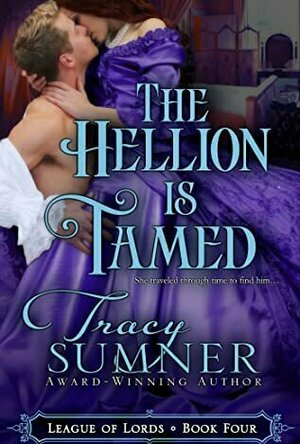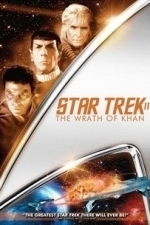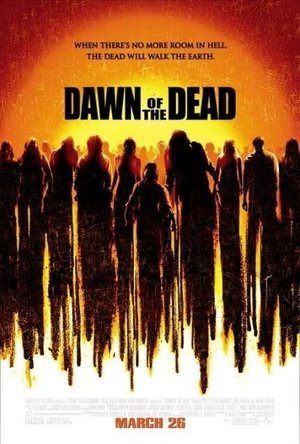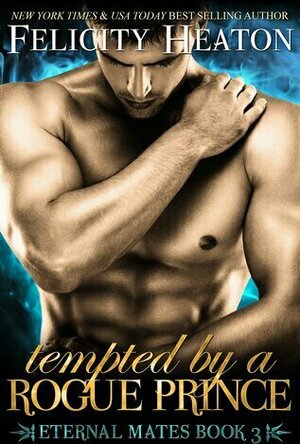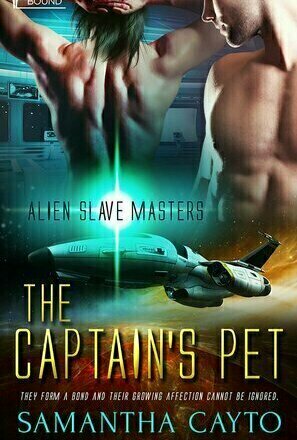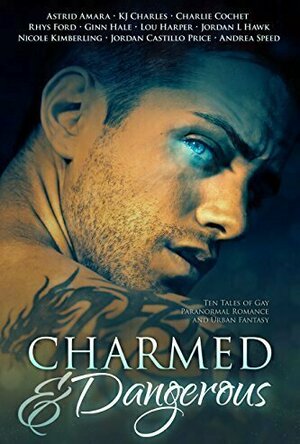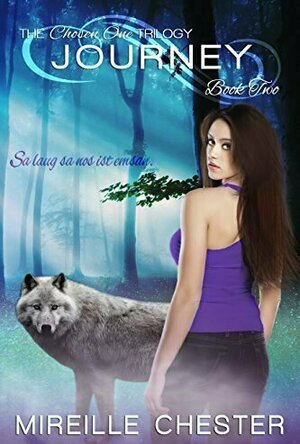Search
Search results
Merissa (13575 KP) rated Warlord's Oath (Legends of Kilrhinn #1) in Books
Sep 6, 2021
WARLORD'S OATH is the first book in the Legends of Kilrhinn series and, if this is the first, then I really can't wait for the second!
The main story takes place between the Kilrhinn and the Lhianne. The Kilrhinn are stronger and faster than the Lhianne (to name a couple of differences) but the Lhianne can control the wind. Freya is seen as a Lhianne but she is actually a half-breed, which is a dangerous thing for her as she is being hunted by someone who wants to make her his bride due to her powers. And he won't take no for an answer.
I loved this story. In fact, if I did half stars, it would a 4-and-a-half-star book. Freya is a strong-will individual who wants to settle down but is afraid to. She desperately wants friends, but worries she will only have to leave them behind. Garrett will do all he can to protect Freya, even from herself. I adored how Garrett was with her, and how completely oblivious she was to it all, not surprising considering her past.
There are other 'breeds' in this story and I really can't wait to learn more about them, their strengths and weaknesses. I am also hoping to learn more about the world, as well as more from the Lhianne and Kilrhinn people.
A slow-burn romance with plenty of action and told from dual POVs. There are so many characters whose stories I now want. A great start to the series, and absolutely recommended by me.
** same worded review will appear elsewhere **
* A copy of this book was provided to me with no requirements for a review. I voluntarily read this book, and the comments here are my honest opinion. *
Merissa
Archaeolibrarian - I Dig Good Books!
The main story takes place between the Kilrhinn and the Lhianne. The Kilrhinn are stronger and faster than the Lhianne (to name a couple of differences) but the Lhianne can control the wind. Freya is seen as a Lhianne but she is actually a half-breed, which is a dangerous thing for her as she is being hunted by someone who wants to make her his bride due to her powers. And he won't take no for an answer.
I loved this story. In fact, if I did half stars, it would a 4-and-a-half-star book. Freya is a strong-will individual who wants to settle down but is afraid to. She desperately wants friends, but worries she will only have to leave them behind. Garrett will do all he can to protect Freya, even from herself. I adored how Garrett was with her, and how completely oblivious she was to it all, not surprising considering her past.
There are other 'breeds' in this story and I really can't wait to learn more about them, their strengths and weaknesses. I am also hoping to learn more about the world, as well as more from the Lhianne and Kilrhinn people.
A slow-burn romance with plenty of action and told from dual POVs. There are so many characters whose stories I now want. A great start to the series, and absolutely recommended by me.
** same worded review will appear elsewhere **
* A copy of this book was provided to me with no requirements for a review. I voluntarily read this book, and the comments here are my honest opinion. *
Merissa
Archaeolibrarian - I Dig Good Books!
Merissa (13575 KP) rated The Hellion is Tamed (League of Lords #4) in Books
Sep 14, 2021
THE HELLION IS TAMED is the fourth book in the League of Lords series. We jump forward a few years in this one, to ensure Simon is now an adult. It is made very clear that he has spent the past years searching for a way to find, and bring back, Emma. Although, saying that, he is still hurt by her not coming back to him after stealing the stone from Sebastian. As for Emma, well, she did return but, being as she doesn't have full control of her gift, she caught Simon in a compromising situation and hightailed it out of there.
Miscommunication and avoidance are the two words I would use to describe this book. Now, of course, if love ran smoothly then there would be no romance books to read but Simon and Emma seemed to take it to the extreme.
The focus is also on Emma's gift, not so much Simon's. I would like to have learnt more about him and his gift. How the ghosts see him as their benefactor/protector. Why? How? What does he do? And how do they protect him in return? We saw one example but are there others?
I would definitely recommend reading this as a series, rather than a set of standalones as I do feel the other books help set the situation up for the next one along. And as Simon and Emma are fourth, then it was good to have some background information on them, and the world they inhabit.
Still, a good addition to the series that I enjoyed and have no hesitation in recommending.
** same worded review will appear elsewhere **
* A copy of this book was provided to me with no requirements for a review. I voluntarily read this book, and the comments here are my honest opinion. *
Merissa
Archaeolibrarian - I Dig Good Books!
Miscommunication and avoidance are the two words I would use to describe this book. Now, of course, if love ran smoothly then there would be no romance books to read but Simon and Emma seemed to take it to the extreme.
The focus is also on Emma's gift, not so much Simon's. I would like to have learnt more about him and his gift. How the ghosts see him as their benefactor/protector. Why? How? What does he do? And how do they protect him in return? We saw one example but are there others?
I would definitely recommend reading this as a series, rather than a set of standalones as I do feel the other books help set the situation up for the next one along. And as Simon and Emma are fourth, then it was good to have some background information on them, and the world they inhabit.
Still, a good addition to the series that I enjoyed and have no hesitation in recommending.
** same worded review will appear elsewhere **
* A copy of this book was provided to me with no requirements for a review. I voluntarily read this book, and the comments here are my honest opinion. *
Merissa
Archaeolibrarian - I Dig Good Books!

How Not to Worry: The Remarkable Truth of How a Small Change Can Help You Stress Less and Enjoy Life More
Book
How to defeat stress, worry, and anxiety to achieve more in business and life. From the...
Bob Mann (459 KP) rated Star Trek II: The Wrath of Khan (1982) in Movies
Sep 28, 2021
Wowee! From the ridiculous to the sublime. This is how to make a Star Trek movie! If you were trying to bring back the action and fun of the original TV series, then what better than to bring back one of the original villains in a sequel to that story? And being able to cast the original actor (Ricardo Montalban) is just perfect.
Nicholas Meyer also clearly had the same frustrations about that first movie. The film barely pauses for breath. Interestingly, it clearly reuses footage from the original movie in travelling to the Enterprise in space dock, but cuts that 6 minute special-effects-porn-fest to about 20 seconds! It’s a striking comparison!
The movie “introduces” Kirstie (“Cheers”) Alley as Vulcan officer Saavik (although she was in a student-made feature the year before). She makes quite an impression. Also new to the series is Merritt Buttrick, playing Kirk’s son David. Sadly, like Khambatta from the last film, his Trek-voyage was to be short lived. Although he appeared in Star Trek III, he died of Aids just three years later.
The movie is also notable for launching the late James Horner onto the world stage as a leading film composer. Horner cleverly associates the “ship” in starship with a roistering seafaring motif that would be equally at home in a Hornblower movie as it is here. I remember leaving the cinema when this was released and heading STRAIGHT into HMV to buy the vinyl soundtrack!
There are very few things I can find to critique in this movie. It all holds up pretty well, even after nearly 40 years (MAN, I FEEL OLD NOW!) The only scene that perhaps grates with modern sensitivities is in the (supposedly comic) “lady driver” reactions from Kirk.
Nicholas Meyer also clearly had the same frustrations about that first movie. The film barely pauses for breath. Interestingly, it clearly reuses footage from the original movie in travelling to the Enterprise in space dock, but cuts that 6 minute special-effects-porn-fest to about 20 seconds! It’s a striking comparison!
The movie “introduces” Kirstie (“Cheers”) Alley as Vulcan officer Saavik (although she was in a student-made feature the year before). She makes quite an impression. Also new to the series is Merritt Buttrick, playing Kirk’s son David. Sadly, like Khambatta from the last film, his Trek-voyage was to be short lived. Although he appeared in Star Trek III, he died of Aids just three years later.
The movie is also notable for launching the late James Horner onto the world stage as a leading film composer. Horner cleverly associates the “ship” in starship with a roistering seafaring motif that would be equally at home in a Hornblower movie as it is here. I remember leaving the cinema when this was released and heading STRAIGHT into HMV to buy the vinyl soundtrack!
There are very few things I can find to critique in this movie. It all holds up pretty well, even after nearly 40 years (MAN, I FEEL OLD NOW!) The only scene that perhaps grates with modern sensitivities is in the (supposedly comic) “lady driver” reactions from Kirk.
LeftSideCut (3776 KP) rated Dawn of the Dead (2004) in Movies
Oct 15, 2021
The 2004 remake of the hugely influential Dawn of the Dead retains some key elements from it 70s counterpart, but is essentially, its own separate thing (This doesn't really bother me, because truth be told, I'm not the biggest fan of the original...)
The iconic shopping mall setting remains, and like the OG film, it's the best character. The mall lends such a unique feel to a genre that is well trodden. The similarities essentially end there. This time around, the zombies themselves are fast, vicious, definitely a modern upgrade to Romero's classic slow moving bois. There are some decent action scenes throughout (the opening 10 minutes is genuinely fantastic) and doesn't skimp on the gory stuff. It's ticks all the right zombie boxes.
Unfortunately, this version is absolutely brimming with asshat characters that really drag the experience down. With the exception of Ving Rhames, the dude who owns the gun shop, and the dog (because dog), it's really difficult to give a flying shit about any of these walking horror clichés - I genuinely think this movie takes the gold for the characters-who-make-really-dumb-decisions-and-put-everyone-else-in-danger category.
What's worse is that just when you're about getting used to all of these douches, a whole bunch more are suddenly introduced at the half way point!
That being said, Dawn of the Dead is still a perfectly entertaining popcorn horror that will satiate zombie fans. It's unsurprisingly not-as-good as the original, but I fully respect that Snyder tried to do something different instead of going through the motions, even if that does mean it loses most of the subtext that runs beneath the original's surface. Worth it if anything, for the weird CGI zombie baby....
The iconic shopping mall setting remains, and like the OG film, it's the best character. The mall lends such a unique feel to a genre that is well trodden. The similarities essentially end there. This time around, the zombies themselves are fast, vicious, definitely a modern upgrade to Romero's classic slow moving bois. There are some decent action scenes throughout (the opening 10 minutes is genuinely fantastic) and doesn't skimp on the gory stuff. It's ticks all the right zombie boxes.
Unfortunately, this version is absolutely brimming with asshat characters that really drag the experience down. With the exception of Ving Rhames, the dude who owns the gun shop, and the dog (because dog), it's really difficult to give a flying shit about any of these walking horror clichés - I genuinely think this movie takes the gold for the characters-who-make-really-dumb-decisions-and-put-everyone-else-in-danger category.
What's worse is that just when you're about getting used to all of these douches, a whole bunch more are suddenly introduced at the half way point!
That being said, Dawn of the Dead is still a perfectly entertaining popcorn horror that will satiate zombie fans. It's unsurprisingly not-as-good as the original, but I fully respect that Snyder tried to do something different instead of going through the motions, even if that does mean it loses most of the subtext that runs beneath the original's surface. Worth it if anything, for the weird CGI zombie baby....
Merissa (13575 KP) rated Tempted by a Rogue Prince (Eternal Mates #3) in Books
Apr 7, 2023 (Updated Apr 10, 2023)
I loved the first two books in this series and was happily looking forward to this one. I've had smoking hot, sexy scenes, and I've had laugh-out-loud moments as the main females stand up to their mates, but in this book, I've had a lump in my throat and tears in my eyes as well.
Vail is a perfectly flawed character and you can see exactly what he's fighting against. Rosalind has her own demons to fight (pardon the pun!) the not least of which is that she is being held against her will and thinks that she has just met the man foretold to appear before her death. So she is a Witch which immediately makes Vail's blood boil and his appearance foretells her death, which she is keen to avoid. How on earth, or in Hell, are these two supposed to get together?
By telling a story with intrigue, depth, and layer upon layer of emotion - that's how. I started this book and thought that I'd just read a bit before bed, just to get it started. After a few hours, I put the book down, fully finished and bleary-eyed. I devoured this book and to be honest, I still need more. Vail has managed to get under my skin and I need to know that he's okay, that he's got and is keeping his H-E-A with Rosalind.
LOVED THIS BOOK!!! Highly, highly, highly recommended.
* A copy of this book was provided to me with no requirements for a review. I voluntarily read this book, and the comments here are my honest opinion. *
Merissa
Archaeolibrarian - I Dig Good Books!
December 19, 2018
Vail is a perfectly flawed character and you can see exactly what he's fighting against. Rosalind has her own demons to fight (pardon the pun!) the not least of which is that she is being held against her will and thinks that she has just met the man foretold to appear before her death. So she is a Witch which immediately makes Vail's blood boil and his appearance foretells her death, which she is keen to avoid. How on earth, or in Hell, are these two supposed to get together?
By telling a story with intrigue, depth, and layer upon layer of emotion - that's how. I started this book and thought that I'd just read a bit before bed, just to get it started. After a few hours, I put the book down, fully finished and bleary-eyed. I devoured this book and to be honest, I still need more. Vail has managed to get under my skin and I need to know that he's okay, that he's got and is keeping his H-E-A with Rosalind.
LOVED THIS BOOK!!! Highly, highly, highly recommended.
* A copy of this book was provided to me with no requirements for a review. I voluntarily read this book, and the comments here are my honest opinion. *
Merissa
Archaeolibrarian - I Dig Good Books!
December 19, 2018
Merissa (13575 KP) rated The Captain's Pet (Alien Slave Masters #1) in Books
Apr 13, 2023
First of all, this book comes with a Reader Advisory - TAKE NOTE OF IT! Seriously, this book is not for everyone and contains scenes that may trigger. Don't think that the advisory is put there for the fun of it because it isn't, believe me.
The story itself is completely sci-fi. Earth has become overcrowded and colonists are sent out to various planets that have been discovered. One such planet, Seven, where our main character Wid comes from, has apparently been colonised by the Travians. War ensues between the humans and the Travians, resulting in a mindless act of vandalism that results in Wid and his associates being taken aboard the Travians' ship.
What happens next is why the advisory is there. There is a lot of violence and rape, although it is incredibly well-written. I won't say anything else about that part but this IS dark and it does come with an advisory.
As the story progresses, you see that some of the boys, Wid included, start to actually have a relationship with their captors. This doesn't feel like Stockholm Syndrome to me, mainly because of how it is written with each of the boys' personalities and experiences taken into account. You learn more about the Travian way of life and, indeed, the Travians learn more about the humans and why they won't just leave Seven even after they've been defeated.
I enjoyed this book, and even if parts of it did make me uncomfortable, I'm glad I stuck with it. I would certainly be interested in going further with this series. I can't emphasise enough though - TAKE NOTE OF THE ADVISORY!!
* A copy of this book was provided to me with no requirements for a review. I voluntarily read this book; the comments here are my honest opinion. *
Merissa
Archaeolibrarian - I Dig Good Books!
Jun 29, 2015
The story itself is completely sci-fi. Earth has become overcrowded and colonists are sent out to various planets that have been discovered. One such planet, Seven, where our main character Wid comes from, has apparently been colonised by the Travians. War ensues between the humans and the Travians, resulting in a mindless act of vandalism that results in Wid and his associates being taken aboard the Travians' ship.
What happens next is why the advisory is there. There is a lot of violence and rape, although it is incredibly well-written. I won't say anything else about that part but this IS dark and it does come with an advisory.
As the story progresses, you see that some of the boys, Wid included, start to actually have a relationship with their captors. This doesn't feel like Stockholm Syndrome to me, mainly because of how it is written with each of the boys' personalities and experiences taken into account. You learn more about the Travian way of life and, indeed, the Travians learn more about the humans and why they won't just leave Seven even after they've been defeated.
I enjoyed this book, and even if parts of it did make me uncomfortable, I'm glad I stuck with it. I would certainly be interested in going further with this series. I can't emphasise enough though - TAKE NOTE OF THE ADVISORY!!
* A copy of this book was provided to me with no requirements for a review. I voluntarily read this book; the comments here are my honest opinion. *
Merissa
Archaeolibrarian - I Dig Good Books!
Jun 29, 2015
Merissa (13575 KP) rated Charmed & Dangerous in Books
Apr 15, 2023
First off, I think this is the first anthology I've ever given a 5-star rating for! Normally it's a 4-star as some stories are better than others but going for the average, it's a 4-star. I did the same with this collection - some I liked more than others - but the average rating is still 5 stars. There are new authors here (for me at least) and now I'm very happy as I can go searching for more of their books.
There is a little bit of everything for everyone here - the common thread being MM romance. Some are new relationships, and some are already established, but each story is individual and very well-written. Some (but not all) of my favourites were 'A Queer Trade', 'The Thirteenth Hex' and 'The Soldati Prince'. All different, all brilliant, all thoroughly enjoyable.
I could mention each and every one but you'd become bored so all I will say is that if you know at least one of these authors and like their work, then I can highly recommend this collection. If you don't know any of these authors but like M/M Romance, then I can highly recommend this collection. If you like a variety of M/M stories including shapeshifters, witches, a vaguely steampunk-type story, alternate realities etc, then I can highly recommend this collection. I'm sure you're getting the idea by now so there you go. I highly recommend this collection and loved it!
* A copy of this book was provided to me with no requirements for a review. I voluntarily read this book; the comments here are my honest opinion. *
Merissa
Archaeolibrarian - I Dig Good Books!
Aug 25, 2015
There is a little bit of everything for everyone here - the common thread being MM romance. Some are new relationships, and some are already established, but each story is individual and very well-written. Some (but not all) of my favourites were 'A Queer Trade', 'The Thirteenth Hex' and 'The Soldati Prince'. All different, all brilliant, all thoroughly enjoyable.
I could mention each and every one but you'd become bored so all I will say is that if you know at least one of these authors and like their work, then I can highly recommend this collection. If you don't know any of these authors but like M/M Romance, then I can highly recommend this collection. If you like a variety of M/M stories including shapeshifters, witches, a vaguely steampunk-type story, alternate realities etc, then I can highly recommend this collection. I'm sure you're getting the idea by now so there you go. I highly recommend this collection and loved it!
* A copy of this book was provided to me with no requirements for a review. I voluntarily read this book; the comments here are my honest opinion. *
Merissa
Archaeolibrarian - I Dig Good Books!
Aug 25, 2015
Merissa (13575 KP) rated Journey (The Chosen One Trilogy #2) in Books
Apr 15, 2023
This is the second in The Chosen One trilogy and picks up where Crossover finished. You are straight back in the action with Hayden and Jasper as they fight for what they believe in and against being used by someone else. The choices that Hayden has to make never become easier but as a person, she grows and becomes more comfortable with the decisions she has to make. Jasper is by her side, supporting her in everything she does and I pity the person who tries to come between them.
This is very well-written although the perspective changes from Hayden to Jasper without warning which I personally found a bit jarring. However, saying that, it was good to get Jasper's perspective on things so I liked it, but a title or note at the beginning of each chapter would have made it smoother in my opinion.
The plot advances swiftly and time skips over 'dead time' occasionally as the plot moves forward. the character development is good and I am looking forward to learning more about the bond between Hayden and Alex, the bond between the Queen and the cats etc. So much information is given to you in this book and yet I am still left wanting more. I need the third book in this fabulous series!
In short, this is a brilliant book that shows the depth and sacrifice entailed with deep and enduring love. I love the world-building and the characters and can't wait to reimmerse myself in Hayden's world. Highly recommended.
* A copy of this book was provided to me with no requirements for a review. I voluntarily read this book; the comments here are my honest opinion. *
Merissa
Archaeolibrarian - I Dig Good Books!
Sep 9, 2015
This is very well-written although the perspective changes from Hayden to Jasper without warning which I personally found a bit jarring. However, saying that, it was good to get Jasper's perspective on things so I liked it, but a title or note at the beginning of each chapter would have made it smoother in my opinion.
The plot advances swiftly and time skips over 'dead time' occasionally as the plot moves forward. the character development is good and I am looking forward to learning more about the bond between Hayden and Alex, the bond between the Queen and the cats etc. So much information is given to you in this book and yet I am still left wanting more. I need the third book in this fabulous series!
In short, this is a brilliant book that shows the depth and sacrifice entailed with deep and enduring love. I love the world-building and the characters and can't wait to reimmerse myself in Hayden's world. Highly recommended.
* A copy of this book was provided to me with no requirements for a review. I voluntarily read this book; the comments here are my honest opinion. *
Merissa
Archaeolibrarian - I Dig Good Books!
Sep 9, 2015
Merissa (13575 KP) rated Death (The Four Horsemen #4) by T.A. Chase in Books
May 2, 2023
Okay, so I might be a bit biased towards Death as I have loved his character in the other three books, but I loved the insights into his past and his character that we got in this book. Death has his own lesson to learn, just like the other Horsemen did. And I will also admit to LOVING the growth of Pierre in this story. He goes from being a poor little rich boy, with no friends, high on heroin, to taking responsibility and standing on his own two feet. He no longer blames the world for his shortcomings, instead, he is working hard to overcome them. And he has done the big first step BY HIMSELF. He didn't use Death as a heroin replacement but instead took the first scary step whilst Death was away.
I think the only thing that confused me momentarily in this book is that Aldo (Pestilence) and Bart had both met Pierre, albeit when he was suffering withdrawal symptoms, but still. However, they are both confused in their own book when they receive a wedding invitation from Gatian and Pierre. Now they might not have known Death's 'mortal' name, but they did know Pierre's. Still, this is a very insignificant point that in no way detracted from my enjoyment.
Well-written, smoothly paced and with an amazing amount of growth, this book is simply delightful. This is definitely the star in the series for me although I have thoroughly enjoyed every book. I would love for a story of Lam and Day *hint hint*. Definitely recommended.
* A copy of this book was provided to me with no requirements for a review. I voluntarily read this book, and the comments here are my honest opinion. *
Merissa
Archaeolibrarian - I Dig Good Books!
Nov 24, 2015
I think the only thing that confused me momentarily in this book is that Aldo (Pestilence) and Bart had both met Pierre, albeit when he was suffering withdrawal symptoms, but still. However, they are both confused in their own book when they receive a wedding invitation from Gatian and Pierre. Now they might not have known Death's 'mortal' name, but they did know Pierre's. Still, this is a very insignificant point that in no way detracted from my enjoyment.
Well-written, smoothly paced and with an amazing amount of growth, this book is simply delightful. This is definitely the star in the series for me although I have thoroughly enjoyed every book. I would love for a story of Lam and Day *hint hint*. Definitely recommended.
* A copy of this book was provided to me with no requirements for a review. I voluntarily read this book, and the comments here are my honest opinion. *
Merissa
Archaeolibrarian - I Dig Good Books!
Nov 24, 2015

